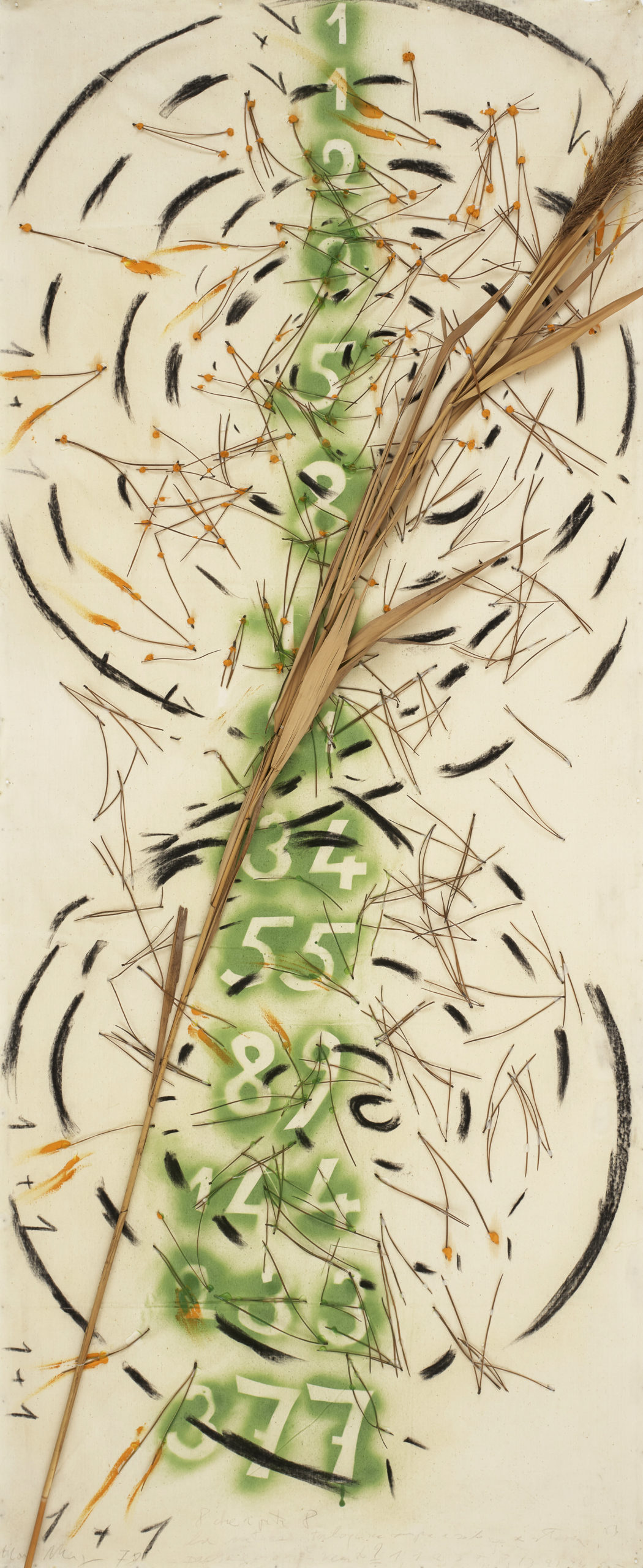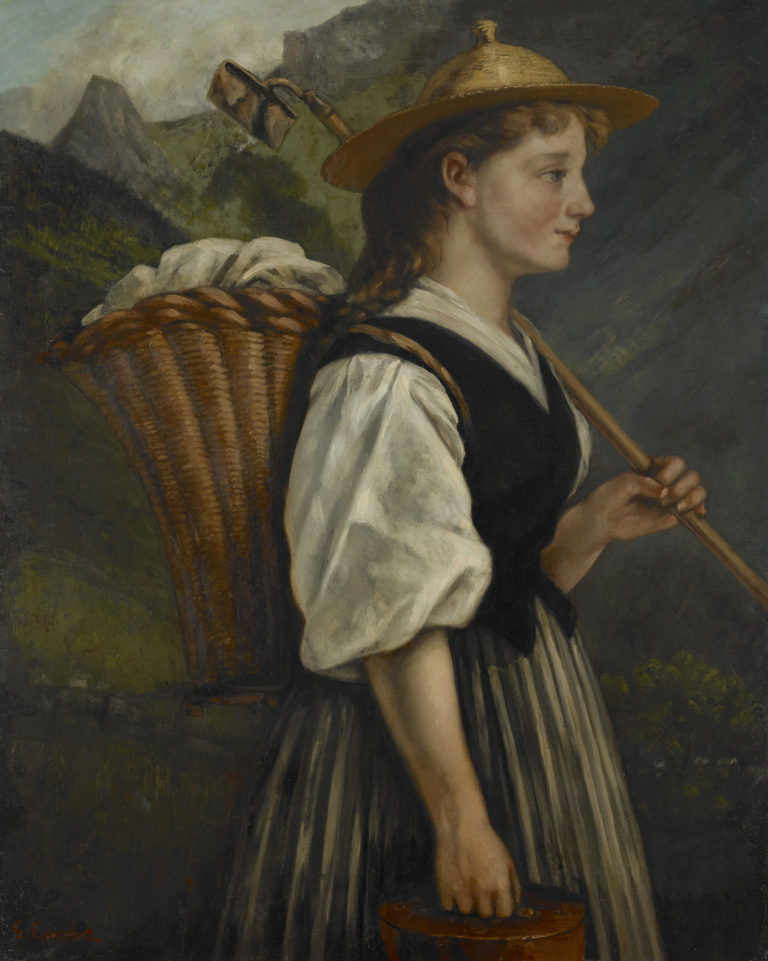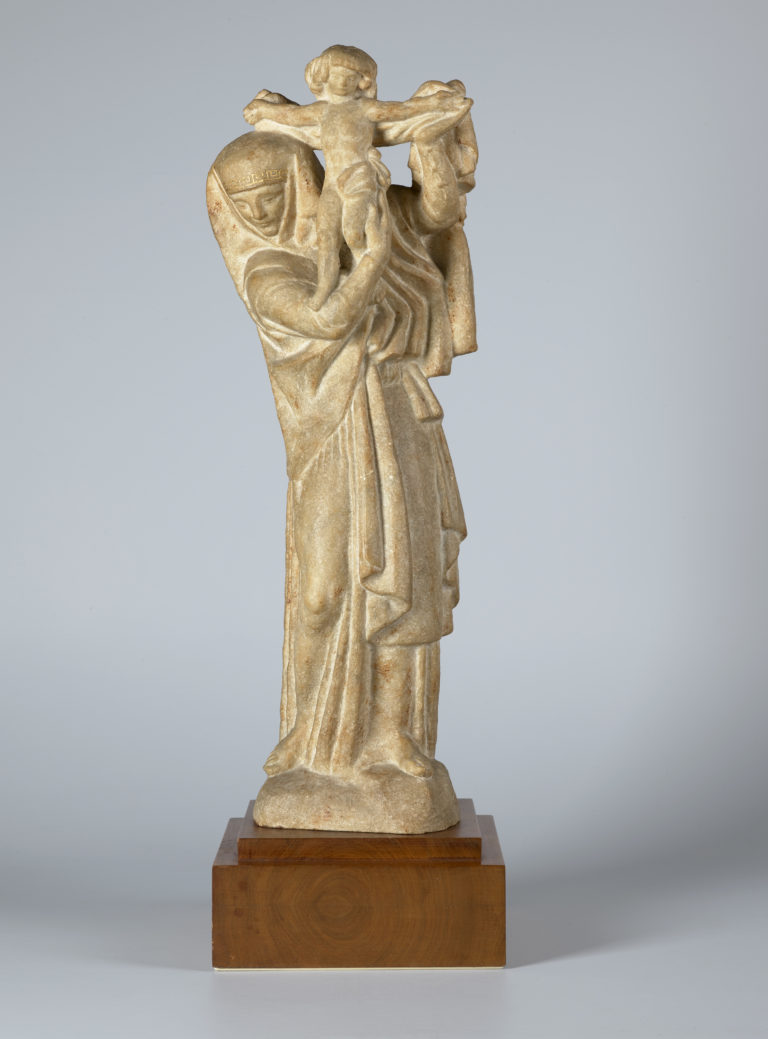Bibliography
Françoise Ducros, Mario Merz, Paris, Flammarion, 1999 (coll. La création contemporaine).
Chantal Michetti-Prod’Hom, À la découverte… des collections romandes I, exh. cat. Pully/Lausanne, FAE Musée d’art contemporain, 1993: 10.
Ursula Perucchi-Petri, Denys Zacharopoulos et alii, Mario Merz, exh. cat. Zurich, Kunsthaus, 1985.




In the 1960s and 1970s, the Fibonacci sequence ([0], 1, 1, 2, 3, 5, 8, 13, 21, and so on) was a constant reference for artists such as Mel Bochner, Donald Judd and Sol LeWitt, who used it as a principle of progression, for instance, for their sculpture. The rule is that each term except for the first two is the sum of the two before. The Fibonacci sequence is thought to be found widely in nature most notably in spirals.
Mario Merz first used the sequence in 1968 when he was thinking about ways to combine art and social activism. Over his oven in Turin, he hung five neon tubes with the numbers ‘1, 1, 2, 3, 5’, creating the work Fibonacci Santa Giulia. He only truly integrated the sequence into his art from 1970 on, however. Being associated with arte povera, he had already shown an interest in organic harmony, considering igloos the ideal shape and habitat, for instance.
This work illustrates the numerical sequence by stencilling it in acrylic alongside two spirals in charcoal. The two elements are often juxtaposed in his oeuvre, as if to display both the principle and illustration: one example is The Philosopher’s Egg, on display at Zurich station since 1991. What he liked about the Fibonacci sequence was less the minimisation of randomness than the growth of the animal and plant realms it symbolised. The question in the work’s title – ‘Does nature always interact only with itself?’ can be explained as a consideration on how living matter is arranged. Alongside the references to the mathematical sequence, he makes use of natural materials. A single reed lies across the sheet diagonally and pine needles are scattered across its surface, suggesting the ‘landscape with wind’ of the title, introducing a simulacrum of chaos into the carefully arranged work.